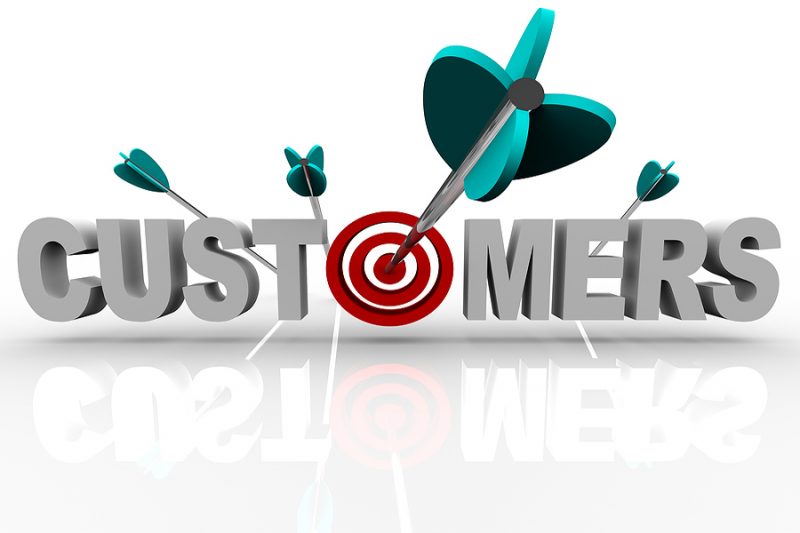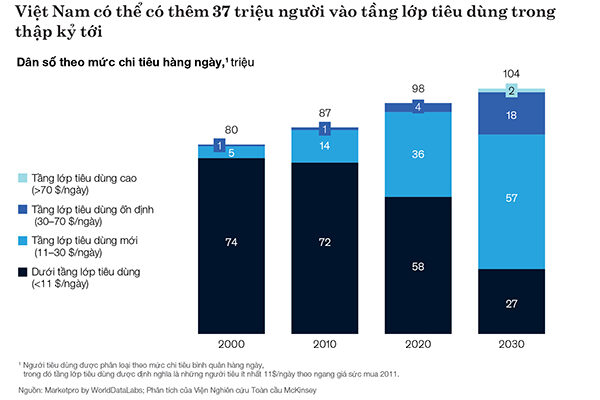EVERYTHING ABOUT HOW TO DETERMINATE TARGET CUSTOMERS IN F&B
This is a difficult problem, even large systems when they expand the market still fail because the target customers in the store area they open are not large enough or there are too many direct competitors.
So when you open a shop, you need to calmly take the time to research the target customer group in your area of business.
Why 90% of restaurants in the market are in business at a loss/unprofitable and have to close in the first 6 months? And there is often a saying: “If someone hates someone, they will incite them to open a start-up cafe”.
The answer lies in the habits of newbies in the F&B business
1. Seeing that other people are doing this business with many customers and want to follow:: observed it was very simple and thought I would do it easily and decided to jump in to split the customers.
2. This trend is so hot, any shop that sells that item or builds that space is very crowded, friends on the pen are all taking virtual pictures with that product and space – take advantage of one quick to make one. collect money.
3. Want to get rid of the hired job being scolded by the boss, not have to live based on other people’s attitudes/faces, don’t want to be scrutinized by colleagues, talk bad behind their backs, bored with the hired job, so decided to open want to be financially free and have no one to manage them and want to get out of poverty.
4. Heirloom recipe, you/your family think that cooking something is so delicious, everyone in the family also compliments it, so they decided to open a shop to sell.
5. Lots of money for what? Lots of money to open a shop to have fun.
6. Dreaming of doing something because of passion: passion to open a shop to become a real barista, selling dishes that everyone loves (young and old, all must fall in love with my dishes) but not yet confirmed decide what to sell – let’s just sell coffee so it’s easy to do, open a shop to satisfy myself first.
The 6 habits above, it is difficult for those who just start F&B business to get rid of. See for yourself, are you falling into the 6 habits Brian shared above?
If you are falling into one of the above 6, then sorry Brian, you risk falling into the 90% above if you do not change your business mindset after reading and understanding what Brian shared.
So why do those who fall into the 6 points above fail? Because simply all 6 points above you do not know what you are doing and will have to do? you just WANT… and WANT everything to be your way without you being able to define:
– Who are your customers?
– How old are they?
– Where are they?
– What are their habits?
– Why should they buy from you?
– Do they have money to pay for your product to sell?
– Are the products you sell suitable for people in your area?
– …
The “-” above are the ones you must determine before opening the shop.
So how to identify customers as the target above?

First, you have to see for yourself what is your STRONGER?
1. You can create a good product (quality, delicious, attractive, eating is addictive) and what you need to do right now is to immediately determine who you are targeting? Who will pay for your product?
What social class do they belong to? (students, students, office workers, workers…) After determining the target audience of the product, immediately go to the area where this group of people is crowded. live to open a restaurant.
Do everything to let those people know that in their area there is a delicious, attractive, quality product that is very suitable for them with online & offline marketing activities and targeting exactly the target group that they are. you have determined which hit.
2. You have a business space available (house space) or find the premises people rent out are too good and don’t know what to do.
Then the first thing you need to do is to survey the characteristics of customers in that area (roll around to the shops that are crowded to see what the characteristics of that target group are, are there many young people? How much?
What are their buying habits like? What products do they like? After identifying the characteristics of customers in the area, Brian will surely know for yourself what products to sell to meet the needs of customers.
3. You have an abundant financial resource, marketing knowledge, long-range strategy, the first thing you need to do is determine who you are serving? (high-income people, available in stock? willing to spend a lot of money to get back a great product/service, what are their consumption habits & where…) from there you will determine where you want to do business & the product you will build .
And if you only have abundant financial resources and determine a large investment, Brian recommends you go to school / hire an external agency to set up and go step by step as Brian shared above (what to sell, who is the target audience). who?
Identifying target customers to choose the right product/location before starting a business will reduce the risk of failure for F&B startups.
Features of the F&B market to note
1. “Buy with friends, sell with wards”
Where you live, you will certainly easily come across similar businesses located close together to form a busy dining business area. These are the places where a large number of target customers are concentrated and most of these areas attract all visitors in the area.
In such business areas, there are always 2 things: OPPORTUNITIES & CHALLENGES
Opportunity:
– Huge amount of customers in this area, you don’t have to look far to get in here.
Challenge:
– The fierce competition in this area can kill you quickly when customers have too many choices in the area.
So now should you open shops on these streets?
The answer is YES, if you are confident that you have many strengths: outstandingly delicious products, a great experience space and an effective marketing strategy that is enough to destroy the shops in that area. You often notice that the big guys in F&B open stores on these streets/areas.
If there are no above points, you should avoid those areas as far as possible, at least 2-3km, because that area has sucked all customers in the area, nearby shops will lose all customers.
2. Resonance in F&B:
If there are too many restaurants in your area of business, you should sell drinks to welcome those customers and vice versa. Exploiting the missing/small products in the area will make it easier for you to achieve success and less competition.
Note: the product must have the same target audience & must have a marketing strategy to attract that target customer.
3. Products with the same target customer segment:
Sometimes face-to-face competition isn’t beneficial unless you’re too confident in your product. Selling products to the same target customer segment will help you achieve more success than going head-to-head.
For example, in an area with too many pho restaurants, you can sell products of the same customer segment as noodle soup, beef noodle soup, etc.
The identification of target customers helps you to choose the location of the premises & locate the product accurately, reducing the deadlock in business. Do not skip this step and calmly build yourself an effective F&B business step by step.
Good luck!
Bonus:
Any business related to sales has target customers, so why do target customers exist?
Target customers are the group of customers who have the highest demand for your product/service more than other customer groups and are able to spend money (financially) on your product/service.
So why should we define target customers in F&B?
– To select the correct FACE POSITION.
– Save marketing costs.
– Push sales opportunities to the highest possible level and sometimes do not need to do marketing to be SUCCESSFUL.
Usually, we will define target customers through the following characteristics:
– Gender
– Age
– Education
– Job
– Consumer behaviour.
In-depth research will always study customer insight (customer insight), these studies will be through market research companies (Nielsen, Cimigo …).
In F&B, the companies that own large chains (HL, TCH …) then they use such in-depth analysis because of the large customer base & wide scale to offer products/services suitable for F&B. the audience they want to target.
Author: Brian Dang
#Truong_business_nhan_HBR






